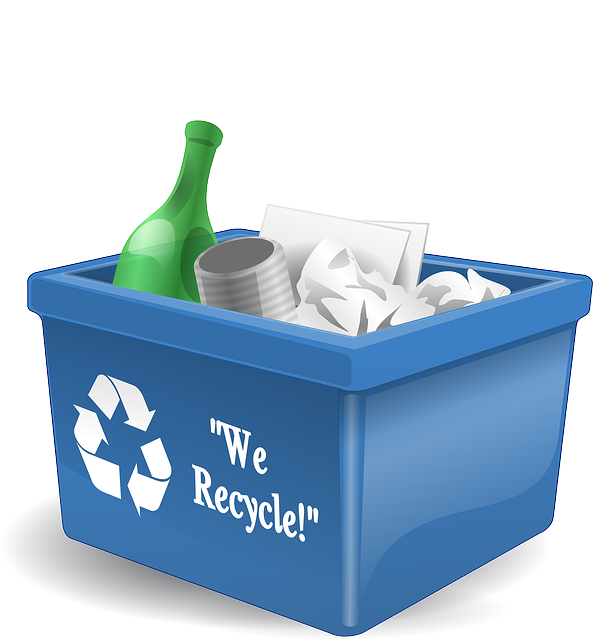
Picture credit: by Hans Braxmeier from Pixabay
The second session on Day 1 of the CII’s virtual Waste to Worth Conference on Plastic Recycling, EPR and Beyond and saw an intense discussion on the opportunities and challenges in EPR compliance by Brands, PROs, and Recyclers; challenges related to governance, implementation; global lessons on EPR, role of ULBs in managing plastic waste and way forward.
The interactive session was moderated by Mr Saurabh Shah – Managing Director, Landbell Group. Mr Shah began the session by noting how the plastic waste management landscape had changed drastically in the last 10 years, particularly in EPR. “It is a force to reckon with today and a cornerstone of WM activity in India. There are a lot of naysayers – but I beg to differ with them,” Mr Shah said. “These are teething troubles which all countries ahead in the EPR curve have been through. Today, one can’t think of waste recycling without EPR. The new draft regulations are the talk of the town. The MoEFCC has implemented strict guidelines and timelines and we need to identify how to meet the targets.”
Mr Shah threw interesting questions at the panellists, some of which are shared below:

- Regarding ban on SUPs, including straws, from July 2022
Mr Tusar Pattnaik – HSE Head, Dabur India Limited said that while alternatives to plastic straws for juices are available in the market, there are technical challenges in replacing these. “We are discussing the matter with different solution providers. For instance, one possibility is to seal the straw within the packaging so it can’t be littered. We are also trying bio-decompostable straws. We are optimistic we will have a good alternative. Currently, our straws made from food-grade polymer are used in the juice industry which benefits millions of children in aanganwadis and patients using ORS, among others.”
Paper straws, Mr Pattnaik felt, aren’t an ideal replacement since they become soggy and are prone to littering.
- Benefits of EPR to WM practices in India
Mr Rahul Poddar – MD, The Shakti Plastics said EPR has brought phenomenal changes in the industry. “We never expected so much behaviour change in the people. There is a visible improvement in the WM system of our country, which was largely unorganised. MCs are adopting segregation systems and setting up MRFs with the support of brand owners and the government. Overall, EPR has been received positively and carrying out their responsibilities effectively. WM agencies are working hard to implement EPR systems on the ground. People are consuming products made out of recycled waste. The industry is also supporting the policies and the situation is dynamic. Upliftment of waste-pickers is also happening alongside. I am very optimistic about the future.”
- Gaps in EPR targets set by MoeFCC and on ground capacities
Dr Atul Sud, Director Legal – Regulatory & Government Affairs, Perfetti Van Melle, one of the world’s largest manufacturers and distributors of confectionery and chewing gum, vociferously argued that the government needs to be more responsive to the challenges faced by the private sector in meeting the EPR requirements. “Only a handful of brands are currently involved in implementing these guidelines. There are operational challenges in the process and we have struggled through various iterations yet regulators don’t seem to acknowledge the work we have done. However, we continue steadfast in our efforts.”
There needs to be an understanding of the complexities of the plastic waste management sector and a collaborative effort is essential. Regulators need to recognize that it’s not yet a process-driven agenda in our country but driven by individuals, according to Dr Sud.“There is no one-size-fits-all solution to India’s waste problems. Each city and state is different and faces unique problems and requiring tailor-made solutions. We have been working hard to educate bureaucrats and decision makers on how to implement solutions. There is a mismatch in the governments expectations and ground reality and capacities to implement EPR. Alternatives are available but the associated costs are enormous and companies need to be given adequate time to implement the rules,” he felt.
Mr Sud also felt there is no clarity among stakeholders themselves on the short term and long term vision for waste management. “Is it for cleaner India or to achieve a circular economy? We can’t achieve both using the same strategy. A fundamental shift in how we view waste is also essential. There has to be a recognition It’s a resource and companies should utilise it. Awareness is essential across the board. Every should know what their role is. In developed economies, segregation levels are good.”

- Massive growth in recycling sector
Mr Sandeep Patel – CEO, NEPRA observed that until recently there were only a handful players who took the initiative to execute EPR solutions. The government was also unaware about how to implement it and placed the onus on private companies to pay for it and manage it. “Also, up to 2013, there were not many waste management companies but today it’s exciting to see the number of companies that have come up due to the EPR rules. EPR creates huge opportunity and welcomes people to come forward to solve the waste problem. There is an external ecosystem now which was not there earlier. The conversation today is how to grow, rather than how to survive. The MoEFFC must set benchmarks since expectations are high.”
- Can there truly be a circular approach to plastic waste recycling?
Mr Amrendra Kumar – Vice President Recycling, Ramky Reclamation & Recycling Ltd noted that each year has seen a visible progress in implementing PWM Rules. “At Ramky, we have been able to achieve true CE in plastics in Hyderabad and Delhi. All the plastic is going to our recycling facilities to make other products while the rest goes to our WtE plants for heat generation. The ensuing bottom ash is reprocessed after additives are added and used to make paver blocks, which are being used for the Central Vista project, among other things. This gives me the confidence that we can truly achieve CE in PWM.”
However, Mr Kumar, rued that recyclers like Ramky spend a lot of time on optimal waste segregation. The moment products are designed better, recycling becomes easier. “Variations in colour, material and non-availability of information on materials used are a big hurdle and I hope producers fix that.”
- Pepsi’s strategy to meet EPR targets in plastic recycling
Ms Juhi Gupta, Sustainability Head – PepsiCo India suggested that the government needs to take cognisance of the on-ground challenges in EPR implementation. We should have a more conservative approach until higher recycling capacities are available. I do understand that from a regulatory perspective, the policies are very good and forward-looking policy, but they are too ambitious.
“The new policy framework will push innovation and capacity building at all levels among various stakeholders in the value chain since compliance is now mandatory. There are no easy answers yet. We ourselves are struggling to find the right answers to a lot of EPR related questions. We are also trying to collaborate with other actors and in the last five years we have made a lot of progress but we have a long way to go. Collaborative platforms are required wherein we find solutions together. This won’t happen overnight. Once there is commitment, we will succeed,” she said.
- How can better product design help brands reduce plastic waste?
Ms Nithika Sailesh, Mobitrash felt that using alternative materials with lower carbon footprint are a useful solution to tackle the plastic waste challenge. “Producers need to design their product keeping in mind the best recycling possibility at the end of product recycling. Thus life-cycle analysis is key. Eventually brands will be forced to spend more time and energy on this so they don’t have to focus too much on disposal and recycle options.”

- Involvement of ULBs and PROs in EPR Implementation
Ms Tejashree Joshi, Associate GM (Head – Environment & Sustainability) – Godrej & Boyce Mfg Co Ltd said “ULBs are the biggest suppliers of plastic waste and have to be made part of the EPR ambit. However, capacity building at ULBs is essential and sadly, lacking. There is also not much clarity on the role of ULBs in the EPR notifications currently and this needs to be addressed.”
“The EPR journey has been like a rollercoaster. Systemic challenges like lack of source segregation, lack of infrastructure and capacity on-ground. Despite this, we have managed a lot and partnered with PROs who have helped us achieve a lot. The new framework is forward-looking and a step in the right direction. While we are working on EPR, a lot of innovation in happening in packaging redesign. It is a time-consuming process since a lot of criteria have to be taken into consideration. Clean feedstock stream is also a challenge for us. At the same time, we have made several achievements in the field.
- How sufficient is recycling infrastructure in India to make a substantial impact and meet EPR targets?
Acknowledging the role of technology in capacity building, Mr Poddar said a key hurdle is recycling infrastructure, followed by technology. Only a handful of recyclers in India are capable of supplying good quality recyclable material. Companies are also facing challenges in consuming the plastic in addition to problems in FDA approval etc. Mr Poddar explained, “We have been discussing these issues with the government and other stakeholders. Coping with the demand and quality will take a few years. We need thousands of recyclers in an organised capacity supplying high-quality granules. Also, India is currently depended on other countries for technological support which is very expensive. While a lot of Indian companies have started manufacturing the machinery, it’s still in the early stages. The government needs to give us more time so recycling capacities need to be scaled up.”
- Need for automation in MRFs
Mr Sandeep Patel said that all geographies are different and the quality of recylcates/ granules is dependent on quality of segregation, which must be emphasised. “Automation at every level is essential, especially segregation. We are capable of investing in granulation technologies but we need to promote isnvestment in the technological transformation of the segregation infrastructure too. Economical segregation is essential and automated solutions should be promoted,” he suggested.
Mr Amrendra Kumar agreed. “Right technologies for waste segregation at MRFs are essential since it reduces the stress on other processes along the line. Creating a pool of skilled resources is challenging for recyclers currently.”



